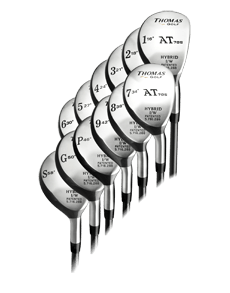 Top 3 Tips on Driving Accuracy
Top 3 Tips on Driving Accuracy
The top of everyone’s list – hitting the driver straighter. The good news, is that I have struggled my entire life with the driver, but I have found many ways to correct any flaws you are having. During the following section, we will cover the causes of the arrant drive, and how to correct them.
I get it, everyone now a days claims to have the “cure-all” and if you are looking for that here… I am the first to say, you won’t find it. There is not cure all for anything in golf, but there are drills that can help you see the driving results you have worked so hard for. I can promise you one thing, if you apply the drills I am going to provide, and invest the correct amount of time, you will see success.
The first thing we will cover, is ball position. This is a vital portion of the swing, and plays a big factor in your contact with the ball, and the direction the ball is traveling after impact. If you are looking to make the best contact throughout your entire game, then start with the ball in the middle of your stance.
I know this may seem a bit odd, but honestly, you can control the ball a lot more when you keep the ball near the middle of your stance. By placing the ball right in the middle of your stance, you are allowing for the club face to be square at contact, and you are preventing the “reaching” motion that causes the ugly block or even slice.
Another benefit that comes with placing the ball in the middle of your stance is with your ball flight. The ball will actually stay a bit lower, which comes in handy when you are playing in high winds. To be honest, hitting the high arcing shots are becoming a thing of the past – aside with the driver of course.
Now that the golf game has become a year round sport, it is vital to have a mid-tier ball flight, which stays below the wind… and turns out to be the more beneficial ball flight throughout the entire golfing year. To practice this method, simply grab a bag of balls and head to the range. The motion will feel quite normal after about ten minutes, and you will be on your way to better contact, and ultimately better flight as well.
The second important tip, is your body alignment. If you are having issues with hitting the ball well off line, then the majority of your issues could be coming from your alignment, and where you are aiming prior to actually hitting the shot. If you are hitting a block, then you are more than likely open, which forces the body to overcompensate, resulting in the blocked shot.
The same thing goes for a hook, except you are probably lined up with a closed stance, causing the body to come over the top, resulting in a pretty strong hook. Another issue that is caused by poor alignment, is the contact with the ball. When you are forcing the body to swing over the top or inside- out, you are also hindering your contact with the ball, causing the poorly hit shots.
To correct this mistake, simply use an alignment stick or even another golf club from your bag. Place the stick on the ground where your feet will go, and point it towards your intended target line… and there you go. I do this every single time I hit balls on the range, even when I am warming up for a golf tournament. It is vital that you are checking your alignment and ensuring you are aiming at the correct target.
The final tip, is your tempo. Everyone believes swinging as hard as you can will result in longer drives. While this has some accuracy (faster swing speeds to result in longer ball striking), however, you do have to have good tempo to not only hit the ball farther, but straighter as well.
There really is no cure all to the swing tempo, it is all about finding what works best for you, and sticking to it, and ensuring that you are taking the club back slower than your follow through. As we have discussed before, the “correct” ratio is 3:1, meaning you take the club back 3 times as slow as your follow through speed. The best drill to correct your tempo, is to basically count during your back swing.
Simply count to 3 during your takeaway and then move forward with your follow through. This will ensure you are taking the club back at a more correct pace, which is what will truly bring on the better contact… and ultimately the longer distance off of the tee. This drill takes a little more getting used to than the other two, so take your time and work on this until you are comfortable with your swing.
Update:
- Proper Alignment: Ensure your body and clubface are aligned correctly with the target. Proper alignment promotes a straighter ball flight and helps you find the fairway more often.
- Solid Setup: Start with a solid setup, including a balanced stance and grip. Keep your weight evenly distributed and avoid tilting too much to one side, which can lead to inconsistent drives.
- Controlled Swing Tempo: Focus on maintaining a smooth and controlled swing tempo. Avoid overswinging or rushing the downswing, as this can result in off-center hits and a loss of accuracy.
Q&A on Driving Accuracy:
Q1: How can I control my driver better for accuracy? A1: Focus on making a controlled and balanced swing, keeping the clubface square at impact, and aiming for the center of the fairway instead of maximum distance.
Q2: Should I sacrifice distance for accuracy off the tee? A2: While accuracy is crucial, finding a balance between distance and accuracy is essential. Focus on hitting the ball solidly with a controlled swing for optimal results.
Q3: What are common mistakes golfers make that affect driving accuracy? A3: Common mistakes include poor alignment, improper grip, lack of balance, and swinging too aggressively with the driver.
Q4: How can I improve my ball-striking with the driver for more accuracy? A4: Work on improving your swing mechanics and ball-striking consistency through practice and possibly with the help of a golf instructor.
Q5: Should I use a different driver for accuracy? A5: The driver itself may not be the primary cause of inaccuracy. Focus on improving your swing and technique first before considering equipment changes.
Q6: How can I find the right driver loft for my game? A6: Work with a professional club fitter to determine the optimal driver loft based on your swing speed and launch characteristics.
Q7: Can grip pressure affect driving accuracy? A7: Yes, grip pressure is crucial for controlling the clubface. A grip that is too tight can lead to a lack of feel and control, while a grip that is too loose can result in a loss of clubhead control.
Q8: How do I improve my ball flight trajectory for better accuracy? A8: Work on maintaining a neutral or slightly closed clubface at impact to promote a straighter ball flight.
Q9: Should I aim down the left or right side of the fairway for better accuracy? A9: Aim down the side that minimizes trouble and gives you the best chance of hitting the fairway. For example, if there is a hazard on the right, aim slightly left.
Q10: How can I reduce slices and hooks off the tee? A10: Focus on improving your swing path and clubface angle at impact. Slices typically result from an outside-to-in swing path, while hooks come from an inside-to-out path.
Q11: How important is mental focus for driving accuracy? A11: Mental focus is crucial for accuracy. Stay committed to your target and visualize the shot before executing.
Q12: Can improving my driving accuracy lower my handicap? A12: Yes, driving accuracy is an essential component of a lower handicap, as it sets up better approaches and scoring opportunities.
Q13: How can I adjust my driver loft for better accuracy? A13: Most modern drivers come with adjustable loft settings. Experiment with different lofts to find the one that best suits your game.
Q14: Can golf fitness training improve driving accuracy? A14: Yes, improving your physical fitness can lead to better balance, stability, and control, which can positively impact driving accuracy.
Q15: Should I play a draw or fade off the tee for better accuracy? A15: Play the shot shape that you are most comfortable with and can control consistently. Both draw and fade can be accurate if executed properly.





